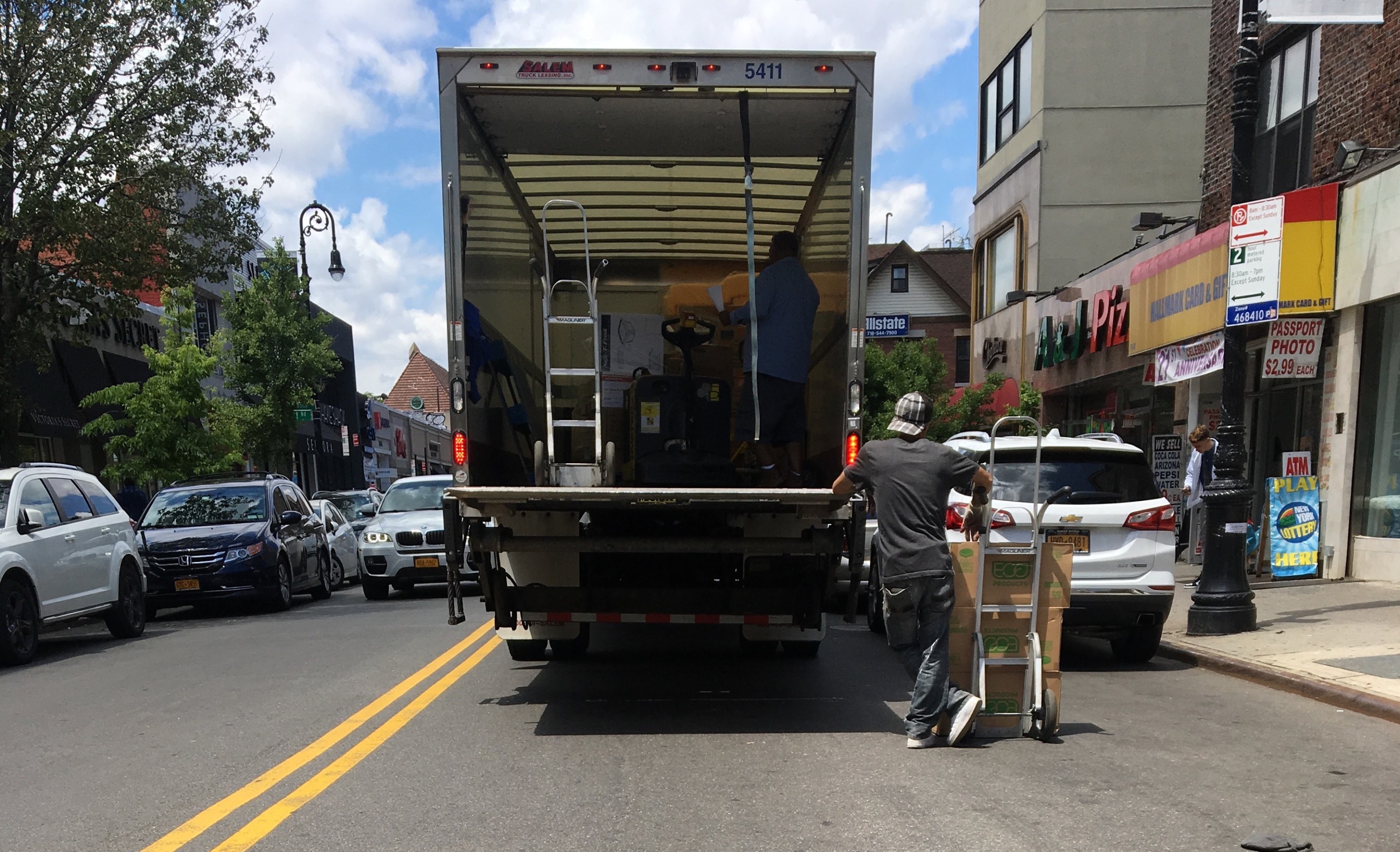New York City Department of Transportation says community input is paramount — as long as it doesn't impede on-street car storage, it turns out.
Nearly two months have passed since Manhattan Community Board 7 asked the city to repurpose some parking spots to create delivery zones at select locations along Central Park West and West End Ave. The board hasn't heard a peep from DOT.
"They treat us with indifference," said CB7 transportation committee co-chairman Howard Yaruss. "It’s kind of unbelievable."
A dire lack of loading zones plagues New York City. As a result, companies like FedEx and UPS frequently double-park, illegally, to make deliveries. The phenomenon slows auto traffic and makes cycling more dangerous. There are entire Twitter feeds devoted to photos of FedEx, UPS, and the United States Postal Service trucks parked in bike lanes.
But the lack of loading zones is worsened by another city policy: the Department of Finance's stipulated fine program encourages illegal parking by forgiving millions of dollars of fines handed out to delivery companies — effectively enabling their dangerous behavior.
CB 7's request came out of a months-long process that included site visits to determine optimal locations for delivery zones. Members of the committee argued that dedicated loading zones reduce double-parking and, as a result, "improve street safety, ease traffic congestion, and facilitate deliveries," the board said in a resolution that passed on Oct. 2.
DOT reps on hand for the board's proceedings weren't so keen on the idea, however. The agency only installs new loading zones if a building requests it, they told Yaruss and his colleagues. The implication was that the agency would need to ask for permission from each and every building along West End Avenue and Central Park West. (Point of information: It is unclear if this is true. DOT would only tell Streetsblog that it's "happy to work with the community board and local stakeholders to identify potential areas for parking regulation changes.")
"This improves safety, it improves traffic flow, it improves air quality, and it improves the general atmosphere on the street, so why wouldn’t the DOT be in favor of it?" Yaruss said.
The question is rhetorical, of course. Yaruss knows why. It's the same reason the agency ignored the board's repeated requests for protected bike lanes on West 110th Street.
Simply put, the de Blasio administration and its DOT make transportation policy with "an undue emphasis on parking," he added. "We’re trying to save lives, they’re trying to save parking spots. If de Blasio is really concerned about human life, he should put that over parking spots."
The board's inability to get DOT to play ball on delivery zones highlights the agency's unequal approach to community board input. Mayor de Blasio has moved forward with street redesigns despite community board opposition, but he's only ever done so after months of back-and-forth. On some occasions, the city has even backed down on a project, as it did when faced with staunch opposition to a bike lane proposed for Clinton Avenue in Brooklyn.
Only rarely does the de Blasio administration revise street designs to include more safety and fewer parking spots. More often, the opposite is the case. Just north of CB 7, in Morningside Heights, Manhattan Community Board 9 has delayed the installation of traffic-calming unprotected bike lanes on Amsterdam Avenue for almost two years, even as DOT has modified the plan to impact fewer car lanes.
"What's happening with these two community board is a stark example of the DOT's inconsistent application of safety standards," said Transportation Alternatives Organizing Director Tom Devito. "DOT will acquiesce to CB 9 when it comes to Amsterdam Avenue, but they will reject calls for greater safety from community boards that are being proactive."
On Thursday, TransAlt and Council Member Mark Levine will rally at 110th Street and Amsterdam Avenue to highlight DOT's unequal approach to community input.






